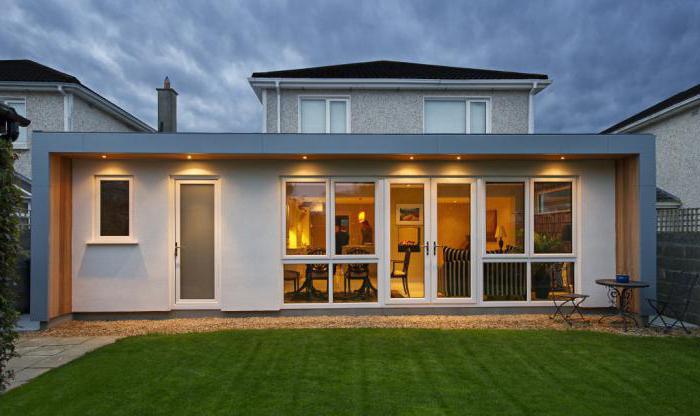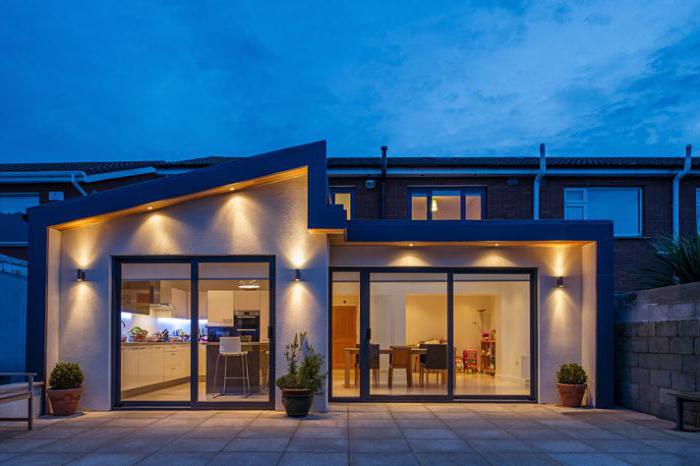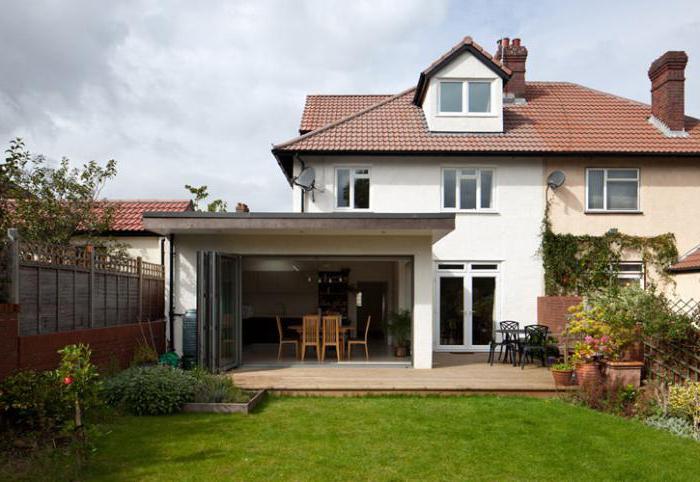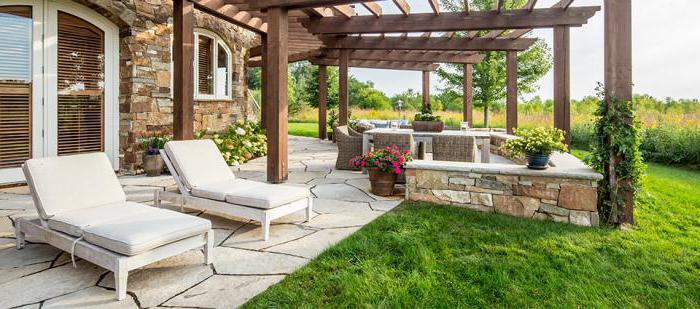Many owners of their own homes dream of building an extension to their home. It can be anything: a gazebo, a veranda, and sometimes even an additional living space. This article will describe in detail how to draw up an extension to the house, what documents are needed for this, and what problems you may encounter at any time.
What is an extension to the house?
To begin with, it would be worthwhile to figure out what exactly is a residential extension. The law, namely the Town Planning Code of the Russian Federation, says that the extension is the reconstruction of an existing housing facility. The extension is not included in the initial architectural plans, but, on the contrary, is considered a secondary building to the main object. An additional building, contrary to popular belief, is not always a small object in comparison with the main dwelling. The extension can be of absolutely any size, regardless of the number of storeys, area, height, etc. The concept under consideration is rather legal, since it is closely connected with the registration and registration processes.
There are many reasons why homeowners want to build an extension. Someone wants to create additional living space, someone corrects the architectural mistakes of the object, and someone wants to build a cozy corner in the form of a veranda or a summer arbor. One way or another, any such extension requires strictly documented and competent legalization. Of course, some citizens decide to ignore the registration process, and therefore an unauthorized extension can legally go under demolition. To prevent this, it is necessary to observe a number of simple rules, which will be described later.
Non-capital type extensions
As already mentioned, an extension can be absolutely any object; the main requirement here is a direct connection with the main structure. And, nevertheless, there are some classifications that make it possible to better understand what kind of house extension projects exist. One of the classifications will be given below.
There are capital and non-capital buildings. Non-capital extensions are small changes made to the main architectural project. These are such insignificant elements as:
- porch, new entrance to the house;
- showcase, various protrusions;
- stairs, small awnings;
- balconies or terraces.
Making a non-capital extension is quite simple. You do not even need to take special permits before starting the construction process. All that is needed is making some changes to the technical documents. Among other things, to non-capital extensions are:
- A garage, if it is being built on the territory of the partnership of gardeners, or on land that is not part of the capital construction project.
- The construction of auxiliary buildings. It is difficult to say that this can be attributed to this, even the Russian Supreme Court has not fully figured out this. Most likely, auxiliary sheds include sheds, small fortifications for something, mounted objects and other non-residential buildings.
- The construction of buildings that do not affect the general structure or communications.
All of the above facilities are non-capital, and therefore do not require special permission for construction.
House extension projects: capital type
Now it’s worthwhile to talk about what constitute capital construction projects. The Town Planning Code of the Russian Federation regulates the norm according to which the construction work on the construction of additional capital type facilities must comply with the original standards (those that have been preserved since the construction of the house itself). Among the capital extensions are objects in which further residence is planned. Moreover, for the construction of such facilities requires additional land area.
The question of how to arrange an extension to the house, in this case will be slightly different - depending on who exactly is the owner of the home. So, all responsibility for the construction of additional buildings should rest with the direct owners of the houses. However, there are situations when the house is divided into several families. About how to act in a similar situation will be described below.
Non-capital construction
How to legalize an extension of non-capital type? This is actually very simple. First of all, you need to find a local bureau of technical inventory (BTI). After this, a complete package of documentation for the house is collected, which should be attributed to the above authority. The bureau draws up a special statement on amendments to the technical house documents. This can be done both before the construction of the extension, and after. The question of which of these two options is more convenient is obvious. The best option would be to design an already erected object of non-capital type, because all the data is already known for sure, and serious changes are unlikely to follow. But there is one small problem. Although this is unlikely, BTI may refuse an extension permit. Of course, there must be serious reasons. That is why it is better to play it safe and coordinate the construction of an object of non-capital type in advance.
A special acceptance committee must come from the bureau to draw up an act of completion of the reorganization. When the BTI gives the full package of documents back, the issue can be considered resolved.
If there are several owners in the house, then a written agreement on an additional non-capital type object from each of the tenants will be required.
Collection of documents for registration of capital extensions
The project of extensions to the house can be called the reconstruction of the existing building. Legalizing capital supplementary structure is not as simple as non-capital. However, there are a fairly large number of options for which you can act legally. The most common and convenient way to register an additional object is the design of "unauthorized construction". We are talking about those cases when the registration of an object occurs after its construction.  In order to avoid problems, everything should be correctly calculated and prepared. The following documents must be collected:
In order to avoid problems, everything should be correctly calculated and prepared. The following documents must be collected:
- a statement of ownership of the land, as well as the house that needs to be reconstructed;
- technical passport and home ownership plan;
- cadastral plan of the site;
- capital type extension project (this can be a plan, a sketch, a diagram - the main thing is that everything is correctly and clearly designed);
- written consent of other owners of the house for reconstruction;
- consent of neighbors to the reconstruction;
- statements from resource-supplying organizations (water supply, energy, gas supply, etc.) that the reconstruction will be safe and not create problems.
All documents are submitted to the local government. Sometimes the authority may request other documents, for example, from the fire department, an architectural company, etc.
The process of completing a capital extension
How to register an extension to the house? After collecting all the necessary package of documents, and transferring it to the local government, you will have to wait for special consent for the reconstruction.In fact, this document provides the right to build an additional facility. If the construction is completed, a state commission is invited to verify the erected structure. Specialists evaluate the building for compliance with the original plan, sanitary standards, as well as architectural rules. Based on the results of the audit, a statement of compliance will be issued, which will need to be transferred to the Bureau of Technical Inventory (BTI). At this stage, all the necessary changes will be made to the technical documentation of the building.
With the received documentation you need to go to the Russian real estate registry. So the extension will be officially registered. In the registry you will have to pay a fee for the entire process of registration.
Thus, the whole process of registering a capital extension is not so simple. In any case, you will have to "sweat" with the documentation - regardless of what type of additional building - whether it is a summer extension, a garage, a covered living area, etc.
Necessary documentation for legalizing an unauthorized extension
Many residents solve the problem before it occurs, and some after. Persons who first built the object, and only then decided to design it, just solve the difficulties after their onset. How to make an extension to the house, if it was erected without permission? Immediately it is worth noting that everything here is not so simple as with the construction of an object of non-capital type. The entire registration process will be decided through the courts. It is convenient or not - it is up to each owner to decide individually.
If the extension of the capital type was erected, and the owner forgot about registration, then immediately you will have to prepare the following package of documents:
- contract of purchase, gift, inheritance, etc., - any document confirming ownership of housing;
- extract from the house book;
- housing permit for the construction of an extension;
- BTI documentation on the main object (to which the extension belongs);
- written agreement of neighbors;
- applications from utilities (gas services, fire inspections, water supply companies, etc.);
- reconstruction project (sketches, drawings, etc.);
- photo of the house and extension.
If all the necessary documentation is collected, you can finally ask yourself how to arrange an extension to a private house.
Legalization of an unauthorized extension
Brick extension, panel, open or closed - all this is completely unimportant; if the capital object was built without premature registration, then it is called "unauthorized", and registering it will not be so simple. The owner is obliged to collect all documents for the house, plans for the extension, and go with them to the local administration. That, most likely, will give a refusal to register the object. This refusal will need to be addressed to the district court. The court also sends the entire package of documents, to which a statement of claim is necessary. If the court makes sure that all the grounds for registration are present, then the case will be won. The owner will pay the fee and register the extension to the BTI.
That, most likely, will give a refusal to register the object. This refusal will need to be addressed to the district court. The court also sends the entire package of documents, to which a statement of claim is necessary. If the court makes sure that all the grounds for registration are present, then the case will be won. The owner will pay the fee and register the extension to the BTI.
Possible problems
The process of registering an extension seems simple only at first glance. Of course, if we are talking about a non-capital additional object, then everything will take shape relatively quickly and easily. If the owner of real estate thought about a capital extension, then everything will be very long and complicated here. Moreover, the process may even turn into utter hopelessness; Thus, an additional building may be demolished due to the recognition of its illegal. At the same time, the bailiffs will not care how long the unregistered object stood, and whether it interfered with someone or not.
There may be problems with neighbors.So, if the extension was built in accordance with all the rules and regulations, but for some reason the neighbors do not want to recognize it, the administration will most likely provide a legal refusal to register. How to avoid failure? How to register an extension to the house without problems? Some tips will be provided later.
How to avoid problems?
In order to arrange a capital extension without problems and all sorts of difficulties, it is necessary to take into account a few simple rules. So, when an additional construction object is only in the project, it is necessary to agree in advance with all the neighbors and landlords (if any). It will not be very pleasant to find out that the neighbors refuse to agree to the construction of the extension when the plans are ready.
When constructing an extension of any type, capital or non-capital, it is necessary to take into account the original design of the original structure. So, the extension must necessarily coincide with the architectural features of the main living space. Otherwise, the BTI simply refuses to register the extension. It is also important to pay attention to the following points:
- a full package of documentation should be compiled with the permissions attached to it from different authorities;
- You need to check the documents of ownership;
- it is advisable to eliminate all possible architectural violations at the original object, as well as to avoid mistakes during the construction of the extension;
- When constructing an additional facility (especially capital type), only safe and certified building materials should be used.
Separately, it is worth noting the so-called country amnesty. The question of how to arrange an extension to the house under a summer residence amnesty is currently not at all relevant. The fact is that the relevant provisions of the law of 2006 cause a lot of complaints because of its complexity and lack of thought. The so-called simplified registration form causes, rather, many problems and difficulties. You can pay attention to this form only to persons who are part of partnerships and country cooperatives.